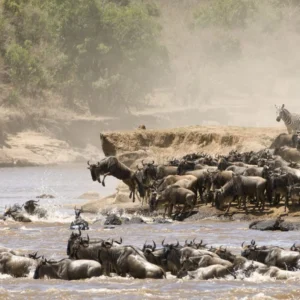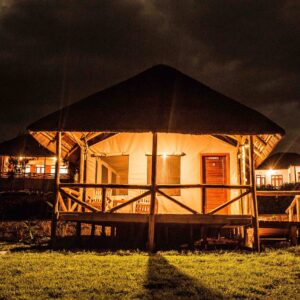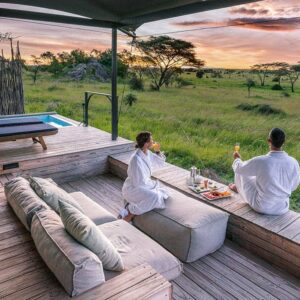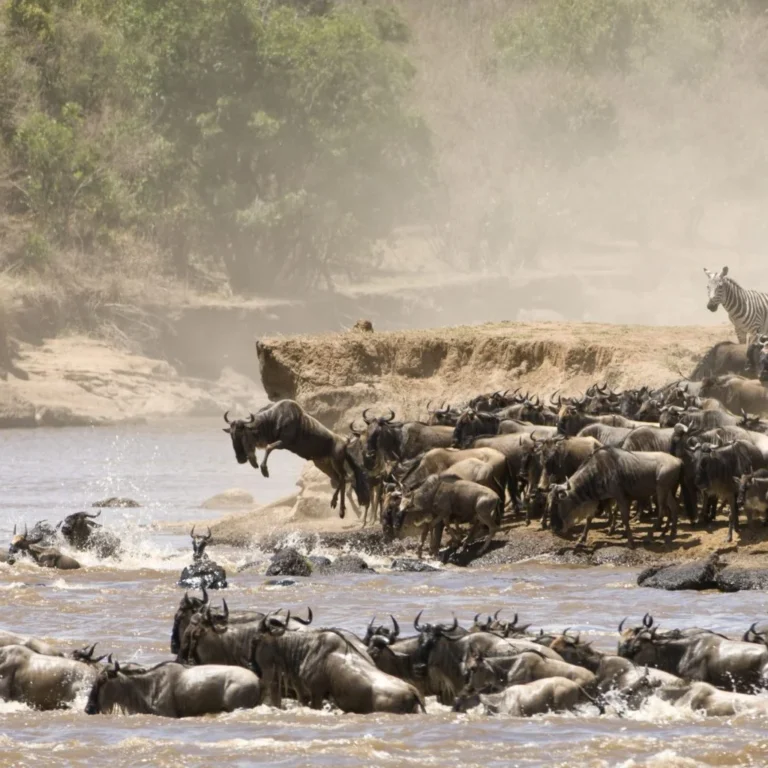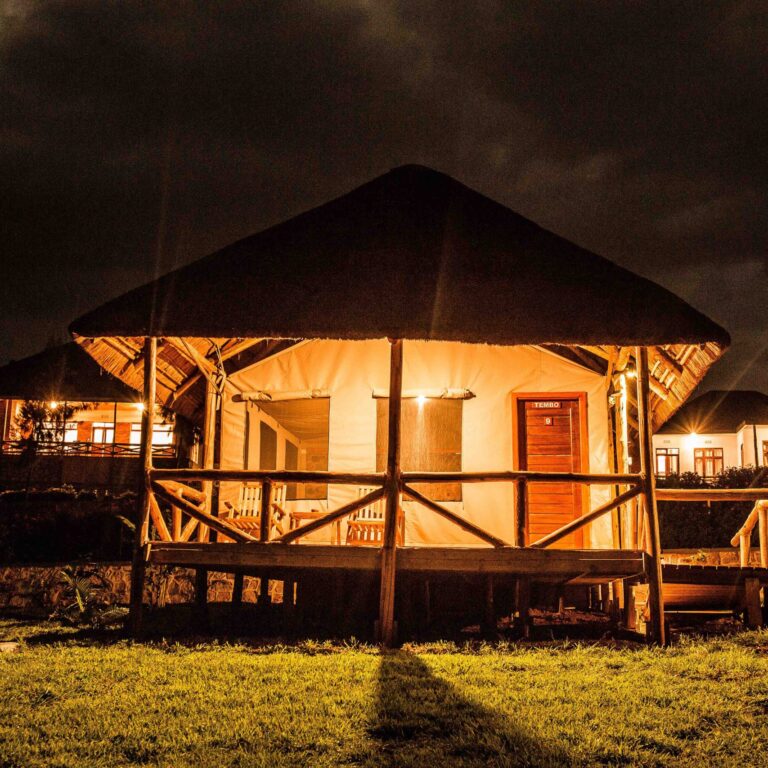Ah, Tanzania! The very name whispers of vast savannahs, the majestic migration, and sun-drenched adventures. For many, a safari here is the journey of a lifetime, an immersion into the raw beauty of the wild. As you meticulously plan your game drives and anticipate encounters with the Big Five, there’s a less glamorous yet equally critical aspect that demands your attention: your wardrobe. Packing correctly for a Tanzanian safari isn’t just about looking the part; it’s about maximizing your comfort, ensuring your safety, and respecting the delicate balance of the natural world around you. Forget your urban chic or resort wear; the bush demands a thoughtful, practical approach. This guide will navigate the crucial “what not to wear” to help you avoid common fashion faux pas and ensure your safari, set against the stunning backdrop of Arusha’s gateway to the northern circuit, is truly unforgettable.
The Blatant Mistakes: Why Your Closet’s Loudest Inhabitants Should Stay Home
When it comes to safari attire, subtlety is your best friend. Certain colors and patterns can actively work against your goals of blending in and observing wildlife undisturbed. Embarking on a safari in Tanzania is a thrilling adventure, offering a unique opportunity to witness the stunning wildlife and breathtaking landscapes of the Serengeti and Ngorongoro Crater. However, preparation is key, and that includes choosing the right attire. While it might be tempting to pull out your best vacation clothes, there are certain fashion faux pas that can hinder your safari experience. Here’s a guide on what not to wear on a safari in Tanzania.
1. Bright Colors and Busy Patterns: The Wildlife Alarm System
While you might feel like flaunting your vibrant wardrobe under the African sun, bright colors and busy patterns can be a significant mistake. Animals, particularly predators such as lions and leopards, are more likely to be attracted to bright colors as they stand out against the earthy tones of the savannah. Instead, opt for neutral tones like khaki, beige, and olive drab that help you blend into the environment. Imagine trying to quietly observe a pride of lions. Now imagine doing it while wearing a screaming neon pink t-shirt or a shirt adorned with a psychedelic floral pattern. The effect is immediate and detrimental. Why to avoid:
Startling Wildlife: Animals, especially those with keen eyesight, are easily startled by unnatural, vibrant hues. Your goal is to blend into their environment, not to stand out like a beacon. Bright colors can cause animals to become agitated, flee, or simply remain hidden, diminishing your chances of incredible sightings. The animals in Tarangire, the Serengeti, or the Ngorongoro Crater are wild and react to anything out of the ordinary.
Disruption: A sudden flash of bright color can disrupt natural animal behavior, making them wary and less likely to carry on with their activities in your presence. You’re there to witness nature, not to inadvertently alter it.
Unflattering in Photos: While vibrant in person, bright colors often clash with the earthy tones of the safari landscape, making your photos look less authentic and more jarring. Your bright red top might steal focus from that magnificent elephant!
Dust and Dirt Magnet: The Tanzanian plains are gloriously dusty. Bright colors will immediately highlight every speck of red earth, making you look perpetually disheveled.
Instead of competing with the vibrant hues of a bird or the patterns on a zebra, aim for colors that echo the landscape. Think muted greens, earthy browns, and soft khakis.
2. White Clothing: The Pristine Target
Although white clothing may seem like a good choice to keep cool, it can attract dirt and dust quickly, diminishing your safari experience. The dry, dusty landscape of Tanzania means that you’ll want clothing that can withstand a few stains and still look good for that perfect photo-op. Moreover, wearing white can also make you more visible to wildlife, which could be counterproductive when trying to observe animals in their natural habitat. While white might evoke a sense of purity, it’s perhaps one of the most impractical choices for a safari, especially given the omnipresent reddish-brown dust that defines the Tanzanian landscape. Why avoid:
Stands Out: Like bright colors, pure white creates a stark contrast against the natural environment. It makes you incredibly visible to wildlife and can be just as startling as neon. Imagine a white flag waving in the middle of the Serengeti.
Dust Magnet (Again): In a matter of minutes on a game drive, particularly on the unpaved roads between Arusha and the parks, your pristine white outfit will transform into a reddish-brown, dusty mess. It’s impossible to keep clean, and you’ll spend more time worrying about your clothes than enjoying the scenery.
Attracts Insects (Potentially): While less of a concern than dark blues or blacks for tsetse flies, some insects can be drawn to lighter colors, and any dark stains (like from a squashed mosquito or a spilled drink) will be glaringly obvious.
Opt for off-white, light beige, or very pale grey if you prefer lighter shades. These offer a similar feel without the stark contrast or immediate grime visibility of pure white.
3. Dark Colors (Blue, Black): The Tsetse Fly Beacon
Similar to bright colors, dark colors like blue and black can absorb heat, which isn’t ideal when you’re out in the sun all day. They also can attract unwanted insects like tsetse flies, which may be present in several parts of Tanzania. Instead, go for lighter shades that are less likely to attract these pests, keeping you comfortable while you enjoy the wilderness. This might surprise some, but very dark colors, particularly true blue and black, are another significant no-go on safari. This advice is particularly crucial for areas like Tarangire National Park, which is known for its tsetse fly population. Why to avoid:
Tsetse Fly Attraction. This is the primary reason. Tsetse flies are notoriously attracted to dark blue and black colors. While not every part of Tanzania is afflicted by tsetse flies, certain areas, especially those with more dense bush like parts of Tarangire and even some parts of the Serengeti, can have them in abundance. A swarm of these biting flies can quickly turn a peaceful game drive into an irritating ordeal. Their bites are painful and persistent.
Heat Absorption. Dark colors absorb more heat from the sun, making you feel much hotter and more uncomfortable in the intense Tanzanian sun. Given that temperatures can soar, especially in the dry season (June to October), staying cool is paramount.
Less Blending. While not as stark as white, black and dark blue don’t blend as seamlessly with the natural palette of the bush as earthier tones.
Stick to the lighter end of the neutral spectrum to avoid being a magnet for these unwelcome guests and to stay cooler. Think stone, light olive, or khaki.
4. Camouflage Clothing: More Than Just a Pattern
While camo might seem like a daring fashion statement for the safari vibe, it’s actually best to avoid it. In many countries, including Tanzania, camouflage clothing is reserved for military use and can be illegal to wear. Opting for safari-appropriate attire free of camo will allow you to enjoy your experience without any unnecessary complications. While camouflage is designed to blend in, it has specific connotations in many African countries, including Tanzania, that make it unsuitable for tourists. Why to avoid:
Misidentification with Military/Anti-Poaching. Wearing military-style camouflage patterns can lead to you being mistaken for military personnel or rangers involved in anti-poaching operations. This can cause confusion or unnecessary scrutiny from local authorities, lodge staff, or even other tour operators. Security is taken seriously, and you don’t want to be perceived as someone you’re not.
Local Sensitivities. In many parts of Africa, military presence can be a sensitive issue due to historical or ongoing conflicts. As a visitor, it’s best to avoid any attire that could be misinterpreted or cause discomfort. You are a guest, not an operative.
Not Necessary for Wildlife Viewing. True camouflage patterns offer no real advantage over solid neutral colors for typical game viewing from a vehicle. Animals primarily detect movement and scent, and a solid khaki shirt works just as well as a camouflage one without the potential for misunderstanding.
Leave the camo at home and opt for plain, solid earth tones that achieve the same blending effect without the baggage.
The Uncomfortable Choices. Prioritizing Comfort and Practicality
Safari isn’t a catwalk. Your clothing needs to be highly functional, comfortable, and durable. Sacrificing these qualities for perceived style will lead to a truly miserable experience, especially with long hours spent traversing dusty roads and scanning the horizon.
5. Jewelry and Watches: Less is Definitely More
When it comes to accessorizing for a safari, less is more. Leave the expensive jewelry and fancy watches at home. Not only do shiny items attract insects, but they also can be a target for theft. Instead, pack practical accessories like a simple hat or breathable scarf that can provide sun protection without drawing attention. While you might want to accessorize, a safari is not the place for your valuable bling. Why to avoid:
Attracting Unwanted Attention. Expensive or flashy jewelry can inadvertently draw attention to you, potentially making you a target for opportunistic theft, though incidents are rare and lodges are generally very secure. It’s simply not worth the risk.
Damage/Loss. The dusty, bumpy roads, getting in and out of vehicles, and the general ruggedness of the environment increase the risk of damaging or losing precious items. A diamond falling out of a setting on a bumpy track in the Serengeti would be impossible to retrieve.
Distraction. Large, dangling earrings or bangles can get in the way, snag on things, or even annoy you with their movement, especially when trying to focus your binoculars.
Safety (Very Minor). While highly unlikely, a very small, glinting object could, in rare and specific circumstances, be perceived as something of interest by an animal.
It’s best to leave all valuable jewelry at home. A simple wedding band, a practical watch, or understated earrings are generally fine, but avoid anything ostentatious. Focus on the natural gems of Tanzania, not the ones on your wrist.
6. Open-toed Shoes or Sandals (Especially for Activities Beyond the Vehicle):
Despite the warm climate, open-toed shoes or sandals are not the best choice for a safari. They leave your feet exposed to dust, possible insect bites, and rugged terrain. Sturdy, closed-toe shoes or hiking boots provide maximum support and protection as you trek through the wild environment. While comfortable for lounging at your lodge, open-toed shoes are a definite no-go for anything that involves stepping out of the safari vehicle. This is especially true if your itinerary includes a walking safari in areas like Arusha National Park or certain designated areas within the larger parks. Why to avoid:
Lack of Protection. The bush is full of thorns, sharp stones, dust, and potential insects (like ants or scorpions). Open-toed shoes offer zero protection against these hazards. Imagine stepping on a thorn or an ant mound!
Dust and Dirt Accumulation. Your feet will quickly become covered in a thick layer of dust, making them uncomfortable and unsightly.
Impractical for Movement. If you’re doing a walking safari (highly recommended if offered and safe), getting in and out of the vehicle, or navigating uneven terrain, open-toed shoes provide poor stability and grip. You need stable footing on potentially uneven ground.
Mosquito Bites. Exposed feet and ankles are prime targets for mosquito bites, especially in the evenings and early mornings.
- For game drives and general lodge wear, sturdy sandals are acceptable for comfort. However, for any activity that takes you out of the vehicle, comfortable, closed-toe shoes with good traction – like hiking boots or sturdy walking shoes – are essential.
7. Shorts and Skirts: Exposure to Elements and Insects
Though shorts and skirts might help you stay cool, they do not offer adequate protection against sunburn, insect bites, and thorny plants. Long pants made from lightweight materials are the way to go as they can shield your legs and allow you to blend in more effectively while keeping you comfortable. While shorts might seem like a natural choice for hot weather, they often fall short on safari practicality, especially given the intense sun and prevalence of insects. Why to avoid:
Sun Exposure. The equatorial sun is incredibly strong. Exposed legs are highly susceptible to sunburn, which can quickly turn uncomfortable and painful, ruining your experience. Long hours in an open-sided vehicle mean constant sun exposure.
Insect Bites. Mosquitoes, tsetse flies (in affected areas like Tarangire), and other biting insects will find exposed skin a ready target, particularly during early mornings and late afternoons when insects are most active. Long pants provide a crucial barrier.
Dust and Scratches. Your legs will quickly become coated in dust from the roads, and minor scratches from vehicle edges or stray branches encountered on bumpy tracks are more likely.
Awkwardness. Getting in and out of high safari vehicles can be awkward with short skirts or dresses, potentially leading to discomfort or accidental exposure.
Instead, opt for lightweight, breathable long pants or capris. If you must wear shorts, choose longer cargo shorts or convertible pants that zip off into shorts for very specific situations (like relaxing at the lodge during midday). Long, loose-fitting maxi skirts made of breathable fabric in neutral tones can work for women, but full-length trousers are generally more practical and provide better protection.
8. Perfumes and Strong Scents: A Disturbance in the Air
Strong scents can disorient wildlife and should be avoided during your safari. Perfumes, scented lotions, or even heavily scented soaps can mask natural smells that animals rely on. Opt for unscented hygiene products and keep it simple to ensure that both you and the wildlife can enjoy the experience unbothered. This isn’t about appearance, but about your presence in the ecosystem. Your sense of smell, keen as it may be, is no match for the heightened olfactory senses of wild animals. Why to avoid:
Scare Wildlife. Animals have an incredibly keen sense of smell. Strong perfumes, colognes, or even heavily scented lotions can be perceived as an unnatural and alarming presence, potentially startling or deterring animals from approaching. You want to be as unobtrusive as possible, allowing them to carry on their natural behaviors without being influenced by human smells.
Attract Insects. Some sweet or floral scents can actually attract insects, which is the last thing you want when trying to avoid mosquito bites. When going on a Tanzania safari, avoid wearing bright colors, white, and dark colors like black or navy blue, as these can attract insects like tsetse flies or disrupt wildlife viewing. It’s also best to avoid wearing camouflage clothing, which is often reserved for military personnel in Tanzania. Additionally, revealing clothing, strong perfumes, and dangling jewelry should be avoided.
Discomfort for Others. Confined spaces in a safari vehicle mean that strong scents can be overwhelming or irritating to your fellow travelers, especially during long drives. Be considerate of those sharing the vehicle with you.
Opt for unscented deodorants, lotions, and sunscreens. Embrace the natural smells of the bush – the rich earth, the various plant life, and perhaps even the distant scent of wild animals.
9. Excessive Clothing: The Burden of Overpacking
While layering can be useful for changing temperatures, excessive clothing can be cumbersome. Pack only the essentials and prioritize lightweight, breathable items that you can easily mix and match. Focus on packing versatile, lightweight layers that offer functionality without unnecessary bulk. While it’s wise to pack layers, bringing your entire wardrobe is a common mistake that can lead to logistical headaches. Why avoid:
Weight Restrictions on Internal Flights. If your safari involves internal flights within Tanzania (which most do, particularly to reach the Serengeti or remote camps), there are strict luggage weight limits, often between 15-20 kg (33-44 lbs) for soft-sided bags. Exceeding this can lead to costly excess baggage fees or, worse, items being left behind at the airstrip, disrupting your travel plans.
Limited Space. Safari vehicles have limited space for luggage. Overpacking makes it harder to fit everything comfortably and efficiently. To make the most of your unforgettable safari experience in Tanzania, dressing appropriately is vital. By avoiding bright colors, heavy fabrics, and unnecessary accessories, you’ll not only be comfortable but also respect the natural environment you’re exploring. With the right wardrobe choices, you’re set for an adventure that you’ll cherish for a lifetime.
Laundry Services. Most safari lodges and camps, even those in remote areas, offer laundry services, often daily and at a reasonable cost. This makes it easy to wash and re-wear items, drastically reducing the amount of clothing you need to bring. Planning for 3-4 outfits that can be laundered is far more efficient than packing a fresh outfit for every day.
Instead, opt for:
Neutral Colors. Khaki, brown, beige, olive, and green are ideal for blending in with the environment, echoing the natural palette of the Tanzanian plains and woodlands.
Lightweight, Breathable Fabrics. Technical fabrics (like quick-drying nylon or polyester blends), lightweight cotton, or linen are preferable for comfort and performance in hot climates. They feel comfortable, wick away sweat, and dry quickly after a wash.
Long-sleeved Shirts and Pants. To protect against insects and the intense sun. Look for shirts with roll-up tabs for versatility, allowing you to adapt to changing temperatures throughout the day.
Comfortable, Closed-toe Shoes with Good Traction. Hiking boots or sturdy walking shoes are recommended for varied terrain, from dusty tracks to potentially rocky lodge paths.
Wide-brimmed Hat and Sunglasses. Essential for sun protection for your face, neck, and eyes. The sun in Tanzania can be incredibly strong, even on cloudy days.
A Light Sweater or Fleece. For cooler evenings or early mornings, as temperatures can drop significantly, especially in higher altitude areas like the Ngorongoro Crater or during the cooler months (June to August).
By understanding and adhering to these “what not to wear” guidelines, you’ll ensure that your focus remains squarely on the magnificent wildlife and breathtaking landscapes of Tanzania. You’ll be comfortable, protected, and respectful of the environment, making your safari an authentic and truly unforgettable experience. From the moment you land in Arusha to your final game drive in the Serengeti, you’ll be dressed for success – not just for style, but for the ultimate bush adventure. Pack smart, dress practical, and prepare for the adventure of a lifetime!

